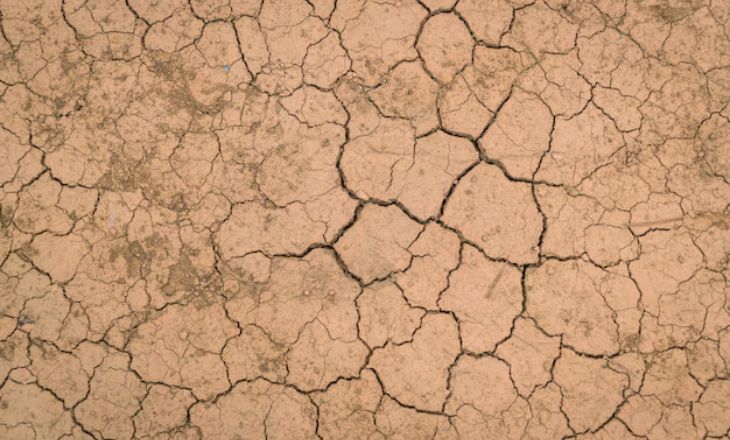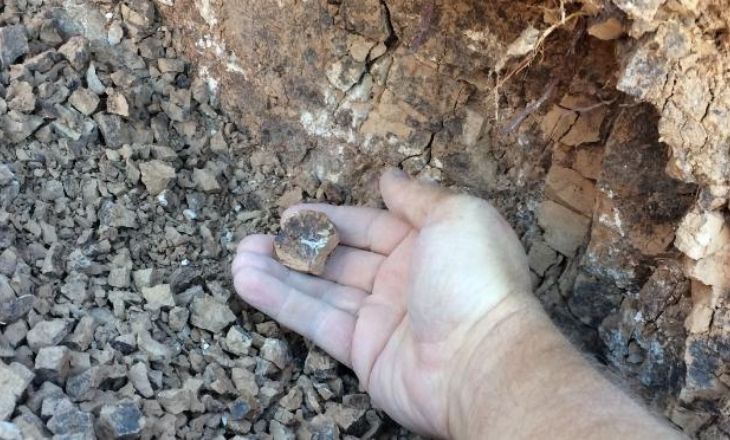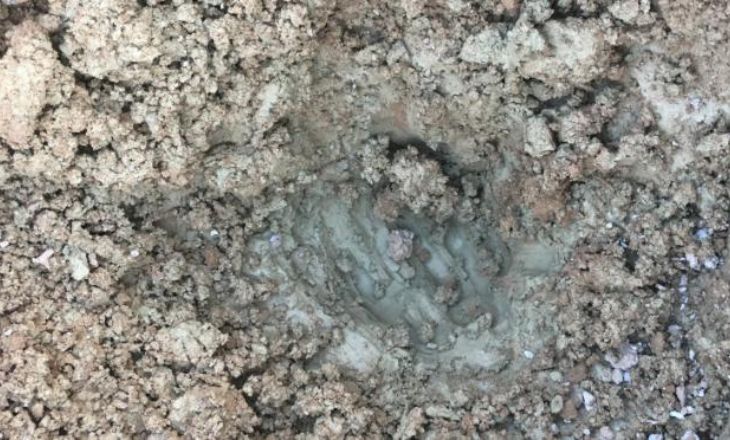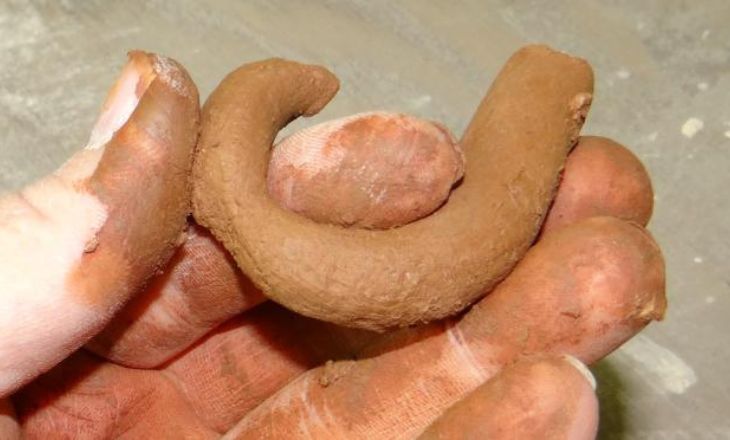Imagine walking through a lush forest, the earth beneath your feet rich with hidden treasures waiting to be discovered. Among these treasures lies a material both ancient and versatile: wild clay. As you navigate the winding paths, your eyes keenly scan the landscape for telltale signs of this elusive substance.
Cracks in the ground hint at its presence, revealing a textured canvas that only nature could create. But how do you distinguish ordinary dirt from this prized material? How can you harness the power of wild clay to unlock its potential for creating beautiful pottery? In this article, we will cover the art of finding and processing clay in its natural environment, guiding you on a journey of discovery and creation.
How to Find Clay
To find clay, start by researching geological maps of your area to identify potential clay deposits. Look for areas with sedimentary rocks or river valleys, as these are common locations for clay formation. Once you have identified a potential site, conduct soil tests to confirm the presence of clay. You can do this by collecting soil samples and testing their plasticity and texture.
Another method to find clay is through observation of the landscape – areas with rich vegetation and water sources are likely to have clay deposits. Keep an eye out for exposed clay banks or outcrops while hiking or exploring natural areas. By combining research, exploration, and collaboration with experts, you can successfully locate and access the perfect clay for your creative projects – whether it be pottery making or construction work.
How To Identify Clay In Nature
One way to identify clay in nature is by its distinct physical properties. Clay has a fine texture, and smooth feel, and can be easily molded into shapes. When wet, clay feels sticky and pliable, and when dried, it hardens and becomes rigid.
Another method to spot clay in nature is by observing the surroundings. Clay often appears as layers or deposits in areas where water once flowed or collected. Look for muddy patches near riverbanks, lake shores, or areas with high groundwater levels.
You can use simple tests to confirm if the material is clay. Try rubbing a sample between your fingers – if it forms a smooth paste without grittiness or graininess, chances are you have found natural clay. Observe how the material reacts when mixed with water – true clay will hold shape and retain moisture even when dried out slightly.
Natural Characteristics Of Clay
Here is a rewritten version:
The following details provide a thorough description of the easily observable characteristics of clay. Being able to identify these signs is crucial for learning how to locate clay in natural settings.
Crackled Texture When Dry
One of the most intriguing natural characteristics of clay is its crackled texture when it dries. This unique feature adds a rustic and organic feel to ceramic pieces, making them visually captivating and aesthetically appealing. The cracked patterns that form on the surface of dried clay are like intricate works of art created by nature itself.

Another fact is its ability to retain moisture, which makes it an ideal material for sculpting and pottery. Its porous nature allows for gradual evaporation, providing artists with a versatile medium that can be molded and shaped with ease. The way clay interacts with water and air creates a dynamic process that results in stunning handmade creations that showcase the raw beauty of this natural material.
Hard, Angular Chunks When Dry
When clay is left to dry, its natural characteristics become evident in the form of hard, angular chunks that can create a striking visual texture. This transformation occurs as the moisture evaporates and the clay particles bond together, resulting in a sturdy and solid structure. These dried clay pieces can be further manipulated and shaped, providing artists and craftsmen with a versatile medium for their creations.

Another fascinating feature of clay’s natural characteristics is its capacity to retain moisture and maintain its pliability when adequately hydrated. This unique quality allows artists to mold and sculpt the clay with ease, enabling them to bring their creative visions to life in various forms. The combination of hardness when dry and pliability when wet makes clay an ideal material for both functional pottery and intricate art pieces.
The Soft, Plastic Texture When Wet
Clay, with its soft and malleable texture when wet, has long been utilized by artists for its versatile properties. This natural material is composed of fine particles that give it a smooth and pliable consistency. When mixed with water, clay becomes easily moldable, allowing for intricate details to be sculpted with precision.
The plasticity of clay allows artists to manipulate the material effortlessly, creating various forms and shapes. Its ability to hold its shape when dried makes it an ideal medium for pottery and ceramics. The earthy colors and textures of different types of clay add richness and depth to finished pieces, enhancing their aesthetic appeal.

The natural characteristics of clay make it a beloved material in the art world due to its softness and plasticity when wet. Artists are drawn to its ability to be shaped into intricate designs with ease while retaining its form once dried. The unique properties of clay offer endless possibilities for creative expression, making it a timeless favorite among artisans worldwide.
Field Testing Clay
Once you have stumbled upon a material that appears to be clay but you’re not entirely certain, it’s crucial to gauge its plasticity. This step is essential in determining whether the material is indeed clay or simply another substance with similar characteristics. By assessing the plasticity, you can ascertain how malleable and workable the material is, providing valuable insights into its composition and potential applications.
When embarking on field testing to confirm if the discovered substance is indeed clay, consider factors such as texture and moisture content. Clay typically has a smooth texture and high moisture content compared to non-clay materials, making it more pliable and moldable. By observing these characteristics while conducting your tests, you can confidently determine whether what you’ve found is genuine clay or an alternative with similar attributes.
The process not only aids in identifying authentic clay deposits but also enhances one’s understanding of geological formations and earth sciences. By immersing yourself in this hands-on approach to evaluating materials found in nature, you enrich your knowledge base while honing practical skills that are invaluable for various creative endeavors involving clay utilization.

One of the key indicators of high-quality clay is its ability to bend and shape without cracking. This flexibility allows for greater ease in molding and crafting intricate designs. When conducting field tests on clay, be sure to pay attention to how well it holds its form when wrapped around your finger. A clay that maintains its shape without cracking or breaking signifies a superior quality material with excellent workability.
How To Process Wild Clay
Processing wild clay can be a rewarding and fulfilling experience that allows you to connect with nature in a unique way. To begin, locate a natural source of clay near you by exploring local wilderness areas or contacting local pottery studios for guidance. Once you have found a suitable clay deposit, collect the clay using tools like shovels or trowels, making sure to gather only what you need and leave the rest undisturbed.
Next, it’s important to clean and refine the clay before use by removing any debris or impurities. This can be done by soaking the clay in water to separate out rocks and organic matter, and then allowing it to dry before further processing. Finally, consider testing different processing techniques such as wedging, kneading, or sieving to make the clay more workable and ensure consistent results in your pottery projects.
By taking the time to properly process wild clay, you can unlock its potential for creating beautiful handmade ceramics that reflect the natural world around you.
Dry Processing Natural Clay
To process wild clay for pottery or other craft projects, start by allowing the clay to dry completely in the sun. Once it is fully dried out, break it into small pieces and grind it into a fine powder using a mortar and pestle or a hammer. This step is crucial for removing any impurities and ensuring a smooth texture for your final product. Sift the powdered clay through a fine mesh sieve to remove any remaining debris or large particles.
After sifting, mix the dry clay powder with water to form a workable clay paste. You can adjust the consistency by adding more water if needed. Knead and work the clay thoroughly to ensure all particles are well blended together. Finally, roll out the clay into slabs or shape it into desired forms before allowing it to air dry naturally or firing it in a kiln for increased durability.
Processing wild clay can be a rewarding experience that connects us with our natural surroundings while creating beautiful handmade pieces. Experiment with different processing techniques and explore how each step affects the final outcome of your creations. By understanding how to effectively process wild clay, you can unleash its potential as a versatile medium for artistic expression.
Next steps
Firing pottery is an exciting next step in the creative process, but it requires careful consideration of clay type and temperature. When using an electric kiln, be cautious not to exceed the clay’s melting point. Start at a low temperature and gradually increase to find the optimal firing level. Placing your creation on a ceramic tile or in a fireproof container will prevent any potential mess if the clay does melt.
Remember, patience is key when firing pottery in an electric kiln. Take your time to experiment with different temperatures and observe how your piece reacts. Understanding your clay’s limits and adjusting accordingly will result in beautifully fired pottery that showcases your craftsmanship. By following these steps with precision and care, you can successfully complete this crucial stage of creating stunning ceramics from start to finish.
Conclusion
Clay can be found in various locations around the world, from riverbanks to construction sites. By understanding the geological processes that create clay deposits, individuals can better predict where to search for this valuable material. It is important to consider local regulations and permissions before harvesting clay from natural sources.
Experimenting with different extraction methods and refining techniques can help improve the quality of the clay obtained. Ultimately, by following these guidelines and conducting thorough research, individuals can successfully find and utilize clay for a wide range of projects and applications. Start exploring your local environment today to uncover the potential of working with this versatile material.
FAQs
Where To Find Natural Clay Near Me?
You can find natural clay near rivers, streams, or in areas with exposed soil layers. For specific locations, consider checking local geological surveys or contacting a local pottery or ceramics group.
How To Get Clay From Dirt?
To extract clay from dirt, mix the soil with water, let the mixture settle, and then pour off the water, leaving the clay behind. Repeat the process several times for purer clay.
Is There Clay In All Dirt?
Not all dirt contains clay. Soil composition varies by region and can include different proportions of sand, silt, clay, and organic matter. Some soils may have little to no clay content.
